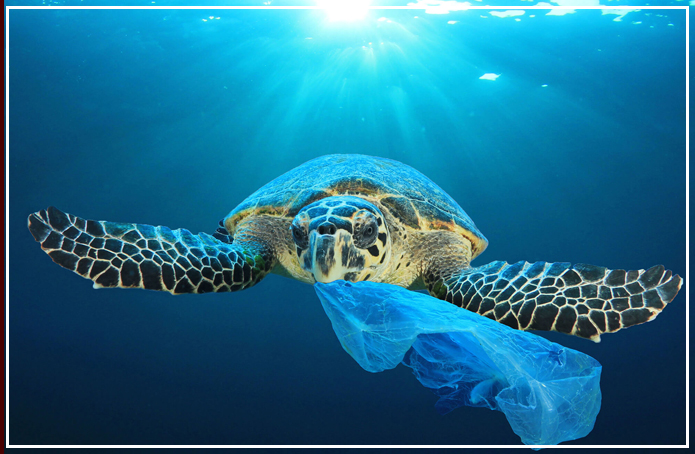Plastic Pollution: “Danger to life of Green Turtles in Ocean, Save them"

Plastic Pollution: The Green sea turtle is named for the green color of the fat under its shell. They are easily discriminated from other sea turtles on the basis of scales, they have a single pair of scales in front of its eyes, rather than two pairs of scales found on other sea turtles. Green sea turtles have a small head and blunt with a serrated jaw.
The Food of green turtles changes significantly during its life. When they are less than 8 to 10 inches in length, they eat worms, young crustaceans, aquatic insects, grasses and algae. Once green turtles grow more than 8 to 10 inches in length, they mostly eat seagrass and algae, the only sea turtle which is strictly herbivorous as an adult. Their jaws are finely saw-like which helps them in tearing vegetation.
Recently it has been revealed by the marine researchers that more than half of the world's sea turtles are having plastic, in their guts as millions of rubbish continues to be discarded into oceans each year and enrich the sea with plastic pollution, said by the researchers of CSIRO.
The home of marine livelihood is polluted by the plastics. But the question arises how this plastic is getting into the sea. In fact, plastic pollution is caused by the accumulation of plastic waste in the environment. These plastics are categorized as primary plastics, such as cigarette butts and bottle caps, or secondary plastics, which is the result of the degradation of the primary plastic. On the basis of its size, it could be microplastics - small particles (<5 mm) of plastic dispersed in the environment - to macroplastics which leads to plastic pollution.
Plastic pollution gets introduced into the sea in different forms which include:
- The accumulation of plastic waste on land leads to plastic pollution.
- The accumulation of marine litter, fragments or microparticles of plastics and non-biodegradable fishing nets, which continue to trap wildlife and waste
- Waste causing the death of animals by ingestion of plastic objects
- The arrival of microplastics and microbeads of plastics from cosmetic and body care products
“Save Marine Life”
“We Can See the Difference but a Turtle Cannot”
Click to read the full article





